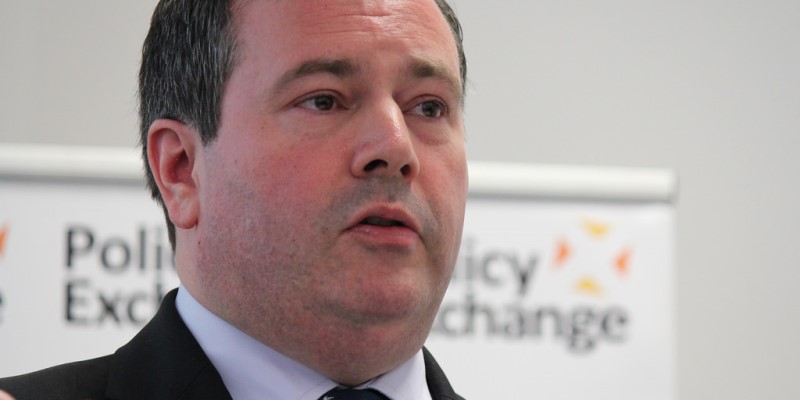Kenney buys another ticket for the resource roller-coaster

The Kenney government has promised to balance the budget by 2022/23. Its plan to get there, however, relies on rapid increases in natural resource revenues. In other words, the government plans to take Alberta for yet another ride on the resource revenue roller-coaster.
The government on Thursday tabled its second budget, which forecasts a $6.8 billion deficit for 2020/21 with gradual deficit-reduction afterward, culminating in a balanced budget in 2022/23.
Much of the attention surrounding this budget (and the first one in the fall) has focused on spending reductions. And it’s true, this government’s fiscal plan calls for small nominal spending reductions, which marks a directional change from its predecessors who continued to increase nominal spending year after year even in the face of large deficits.
However, it’s a mistake to think the government’s path to balance is based entirely—or even primarily—on spending reductions. In reality, the budget forecasts an $8.1 billion increase in revenue including a $3.4 billion increase in non-renewable resource revenues (oil and gas, for example) by the time the budget is balanced. In other words, most of the deficit reduction is expected to come from revenue gains linked with a stronger economy and higher energy prices, not spending cuts.
Let’s look at the numbers. In the upcoming fiscal year (2020/21), the budget forecasts non-renewable resource revenues at $5.1 billion. That number is forecasted to climb to $6.7 billion next year and $8.5 billion in 2022/23.
In other words, the Kenney government expects non-renewable resource revenues to increase by 68 per cent over two years. Therefore, growth in non-renewable resource revenues is responsible for half of the government’s forecasted deficit reduction.
The fact means that the government’s fiscal plan involves considerable risk.
Natural resource revenues are more volatile than other sources of government revenue. For example, from 2014 to 2015, Alberta’s non-renewable resource revenue collapsed from $8.9 billion to $2.8 billion in just one year. This collapse, combined with spending growth in previous years, produced Alberta’s recent large deficits. And underscores the danger of riding the resource revenue rollercoaster.
Of course, the 2014-15 commodity price collapse is an extreme example, but it illustrates the volatile and unpredictable nature of this revenue source. Even if the government’s plan goes according to plan, and it achieves balance in 2022/23, the province’s finances will still be at risk. Under this optimistic scenario, the government would still rely on $8.5 billion in non-renewable resource revenues to achieve balance.
As such, even the complete execution of the government’s fiscal plan would represent only a first step in the process of repairing provincial finances. The government must find further spending reductions—or commit to a period of long-term spending restraint—to make the province’s finances less vulnerable to resource revenue volatility.
Again, the Kenney government has promised to balance the budget in 2022/23. If it keeps this promise, according to the current plan, forecasted increases in non-renewable resource revenues will have done much of the heavy lifting.
Quite simply, the government’s fiscal plan will take Albertans for another ride up the resource revenue roller-coaster, risking another unexpected fall.


